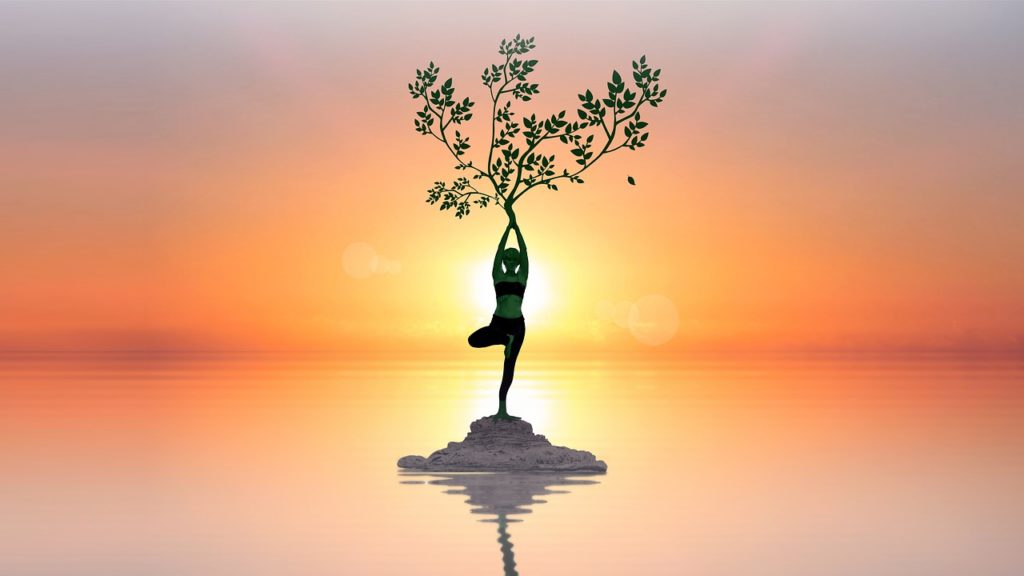Preparing for Your First Trauma-informed Yoga Class
SexForEveryBody.com is supported by our readers. We may earn a commission if you buy through links on our site. Learn more.

In an earlier article, I walked through what is trauma-informed yoga, also known as “trauma-sensitive yoga”, and how it aids sexual assault recovery.
The format of trauma-sensitive yoga, however, does take some getting used to as it deviates from the yoga classes you might be used to.
Before attending any classes
Typically, before you attend your first session, you’ll have a call with someone from the studio. When I had mine, they told me that this is to give people space to ask questions, prepare emotionally, and feel as safe as possible going into the class.
On my introductory call, for example, we talked about the history of trauma-sensitive yoga and the studio, what I can expect from the classes, and there was plenty of time for me to ask any questions. The entire call took about 20 minutes.
If you’re attending a virtual class, they typically recommend you have the following:
- A safe, ideally private, space to practice
- Yoga mat
- Comfortable clothing
- Cushions or blocks
- Blanket
What to expect during class
A few aspects that make the experience of trauma-sensitive yoga unique. Below are a few examples based on the classes I’ve attended, but the practice can vary by studio.
You’re given the space to practice making choices
Survivors of trauma often experience a loss of agency, so one of the key values of trauma-informed yoga is choice making.
Rather than moving through specific positions, the facilitators give various options for how you can engage your body, and ultimately, you choose how to move.
Instead of a traditional tree pose, for instance, the facilitator will offer three different ways to place your feet, an option that includes movement, and a seated alternative. There’s never forced stillness or pressure to achieve a certain position.
During my first class, the facilitator said:
This is a lesson where you do what you really want to do, not what you feel like you have to do.
It took me a while to truly grasp this.
I followed closely along with the instructions and mindlessly went through the motions. Months later, I’m slowly becoming better at deciding how I want to move and what’d be the most useful for me at that moment.
The facilitators use ‘invitational language’
Because the facilitators are offering a way of moving and not specifically instructing, this is reflected in the language that they use during the classes.
Some common phrases used by facilitators:
- “You’re welcome to explore [movement]”
- “The invitation is there to…”
- “Maybe for two more counts, possibly for one…”
- “If you find this useful”
- “You can invite your [body part, for example arm] to participate in [position, for example side bend]”
For me, this is what took the longest to get used to because it’s the most immediately noticeable difference between trauma-sensitive and traditional yoga.
There’s an emphasis on exploration and sensing your environment

In trauma-sensitive yoga, you’re often told that “there’s no right or wrong way to explore.” You’re encouraged to move, bend, stretch—then to take a moment to acknowledge how your body feels.
My favorite example of this is when we do a movement on one side of the body, like a lunge, then return to a neutral position and have a moment of stillness. This gives me the opportunity to acknowledge the difference between the two sides of my body.
Another distinguishing feature of trauma-informed yoga is that whenever you transition—from sitting to standing, for example—you’re encouraged to re-orientate yourself and take a moment to notice your body in this new space.
Facilitators also emphasize that it’s ok to step out of any position “at any time, for any reason” so you’re never forced to push yourself unless you intentionally choose to.
Even if you’re not ready or able to explore sensations, that’s ok too. The facilitators often accompany this work with phrases like “not noticing anything at all is noticing” or “choosing not to notice anything in this movement is also an active decision.”
It’s never hands-on
I attend virtually so this is a given, but every facilitator I’ve spoken with has assured me that nobody will ever touch you without asking first. Usually, they’ll never ask to touch you at all because there’s no “correct” way to move in trauma-sensitive yoga.
When attending a virtual class, you’re also never required to turn on your camera.
No breath work during the session
This varies from studio to studio, but the courses I attend never include mandatory breath work or breathing exercises during classes.
This is because, for some, rhythmic breathing, or hearing those around you breathing, can be triggering. For example, shallow breathing can be associated with panic attacks, which is a common symptom of PTSD.
Sometimes in virtual classes where everyone else is muted, the facilitator will offer options for attaching breath to movement—but choosing to do so is entirely up to you.
Any silences are announced
If there will be a moment of silence or stillness, the facilitator will announce this in advance and include how long the pause will be. This is designed to help ease any anxiety participants might experience.
Processing after the class
At the end of the class, the facilitator will often stay online and offer a space for discussion or questions. In my experience, many will take advantage of this opportunity and use the space to get advice on their yoga practice or body sensations, and ask for resources.
Like any recovery tool, trauma-informed yoga won’t necessarily be a silver bullet and it’s recommended to attend classes in tandem with other forms of therapy. But if you’re someone who suffers from complex trauma or PTSD, it could be worth trying out
Image sources: Avrielle Suleiman/Unsplash, DG-RA, rauschenberger
Read Part One: How Trauma-informed Yoga Aids Sexual Assault Recovery
Carolyn (she/her) is a queer software engineer and freelance journalist based in Berlin, Germany. She writes about the intersections of technology and sexuality for outlets like Future of Sex, Autostraddle, Curve Magazine, and elsewhere. You can find her most places on the Internet @carolstran.












